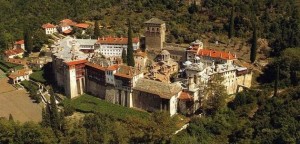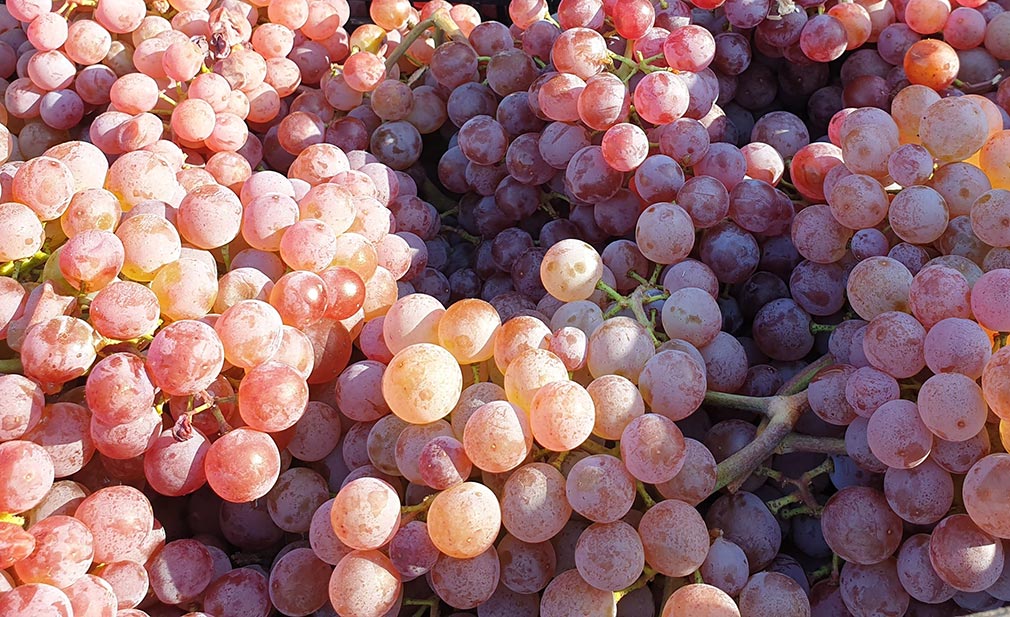News
News / 12/04/2016 / 2394

Serbia and Greece share common history, religion, culture, Balkan lifestyle. However, there is another thing that connects Serbian and Greek people: the spiritual heritage of Mount Athos, the unique monastic state in Europe. From there, the cultural and spiritual light of Hilandar (Serbian monastery located on Mt Athos, North Greece) has been radiating towards Serbia for centuries.
TRANSFORMATION OF CENTURIES-LONG TRADITIONNowadays, contact between monks on Mt Athos and the rest of the world is much easier. One still requires a special permit to enter the territory of the Holy Mountain. Mount Athos is still accessible to men only, but the travel is now easier, whilst plenty of information about the monasteries can be found on internet... A similar change happened with the winemaking of Mt Athos.
Medieval manuscripts testify that wine production in the monastic communities of Mt Athos ranged about 8-10 tons per year. Wine was made exclusively for the needs of the monastery. Traditionally, monks produced dry wines, wine made from grapes dried in the sun and fortified wines that were used only on special occasions, eg. important Christian holidays. The importance of Mt Athos' monasteries is vital for preservation of indigenous grape varieties such as Limnio, Fokiano, Roditis, Muscat of Alexandria (Malaga) which have been planted on Mt Athos for centuries.
Typikon (Tragos) from the year 972, the first document that outlines administration and governance of Mt Athos contains chapter 15 which relates to wine trade. According to this Constitution of Holy Mountain, the sale of wine outside Mount Athos was strictly prohibited. The only exception to this rule was in the time of hardships. Wine was allowed to be exchanged for goods that were lacking, but without taking money. Times have changed. Market economy rules the world. Although it may seem that time has stopped on Mt Athos, new habits and customs have arrived there as well... Most monasteries there produce wine for commercial sale, and the fact that they originate from the Holy Mountain gives them marketing advantage. They are also involved in online sale. Today, it is possible to purchase wine from the Holy Mountain while sitting comfortably at home and get it delivered to preferred home address. YEAR OF THE LORD 1969 - NEW WINE OF THE HOLY MOUNTAINTransformation of winemaking on Mt Athos began in 1969. While hunting in the forests of Mt Athos, Evangelos Tsantalis sought shelter from a sudden storm in St Panteleimon monastery. During his stay, he spotted old deserted vines. Then he invited experts who suggested that restoring these old vineyards would be a costly enterprise. However, his response was that the price is unimportant if these vines could produce top-quality wines. Already in 1971, a cooperation contract was signed with the monastery, investments began in the vineyards at the plot Metohi Chromitsa as well as full restoration of the winery with an intention to reflect the tradition of Mt Athos. Thus, state-of-the-art technology has arrived in Mt Athos monasteries. Nowadays, Tsantali produces grapes from vineyards covering 70 hectares on Mt Athos. This winery takes pride in wine Kormilitza Gold that is purveyed to the Kremlin and the Russian state protocol. Retail price of this 2007 blend containing Cabernet Sauvignon and Limnio is about 120 EUR / bottle.
All Mount Athos wines are officially designated as PGI area wines (PGI Mount Athos). Varieties that are commonly found in vineyards of Mount Athos are virtually all those present in the wine region of Halkidiki, both indigenous (Athiri, Assyrtiko, Limnio, Roditis, Muscat of Alexandria) and international (Cabernet Sauvignon, Cabernet Franc, Merlot, Syrah, Grenache).
VINEYARDS OF HILANDARFollowing the terrible fire that broke out in Hilandariou in 2004, which burnt almost half of the monastery complex and the urgent need to allocate substantial funds for reconstruction of the monastery, Hilandariou monks realized that winemaking could be a winning combination to raise much-needed funds. Until that moment, a small quantity of wine had been produced solely for the needs of the monastery. Now the moment arrived to grow big. In cooperation with experts from the Faculty of Agriculture in Belgrade, the project of planting vineyards on the plot called Savino Polje (St Sava’s Field) was initiated. This particular plot was selected as old vineyards once stood there. The total vineyard surface covers 17 hectares. The vineyards predominantly contain international grape varieties: Merlot, Cabernet Sauvignon, Cabernet Franc, Grenache, Marselan, as well as limited quantities of local Greek and Serbian varieties: Prokupac, Vranac, Smederevka, Žilavka, Athiri, etc.
PREMIÉRE OF HILANDAR WINE IN SERBIARecently, in Belgrade, the Holy Monastery Hilandar Foundation, Podrum Wine Art and Revin company have organized a première of SAVINO POLJE 2010 from Hilandar Winery. One would think that entering the Serbian market with just another Bordeaux blend is a courageous step, as such wines face a lot of competition on the Serbian market. But, actually, Hilandar Monastery remains unrivalled, regardless of varietal composition. Even wines from other monasteries that are available on the Serbian market (Bukovo, Studenica, Tvrdoš, Petkovica, Dečani, etc) cannot compare with it. Simply, Hilandar is a specific brand. For Orthodox Christian Serbs, it symbolizes the centuries-old relationship with Saint Sava. Wine labelled “Wine from Mount Athos“ and “Savino Polje“ doesn’t need extra marketing. It will be a favourite pick for every traditional festive meal hosted by Serbian families. Even at the retail price of 2.000 dinars (16 EUR), since Serbs don't get stingy when it comes to feasting.
Wine in good condition. Although 6 years old, the wine exudes youth and freshness. Somehwat untamed acidity adds to youthful appeal. Fruity aromas prevail, accompanied with delicate notes of leather, cedar, coconut, sweet spices. The wine captivates the power of sun-drenched Mediterranean soils. A promising start for Hilandar Monastery Winery and an indication what these young vineyards will produce when they reach maturity and give full expression of Savino Polje which combines different types of soil in a single plot ranging from alluvial soil, limestone to layers of basalt and granitic stone.

Tomislav Ivanović
Awarded wine writer, wine critic and contributor to selected wine magazines. WSET3-certified author and editor-in-chief of www.vinopedia.rs. Member of Vojvodina Sommelier Association. Juror in national and international wine competitions. Lecturing about wines of Serbia and the Balkans. Local partner of Wine Mosaic organization. Co-founder of International Prokupac Day.

Pročitajte i druge članke iz ove rubrike:


VINOPEDIA TOP 10 2024
PROČITAJ VIŠE


GIUAANI - VINSKI TURIZAM NA GRUZIJSKI NAČIN
PROČITAJ VIŠE


SPASIMO STARE VINOGRADE SRBIJE
PROČITAJ VIŠE


NAŠLI SMO ANTIGONU IZ ORAHOVCA
PROČITAJ VIŠE


SRPSKO VINO KOŠTA 100 EUR - I ŠTA ĆEMO SAD?
PROČITAJ VIŠE
Winner MILLESIMA BLOG AWARD 2016

Pobednik MILLESIMA BLOG AWARD 2016
VINO & FINO wine personality of the year 2016

VINO & FINO vinska ličnost godine 2016